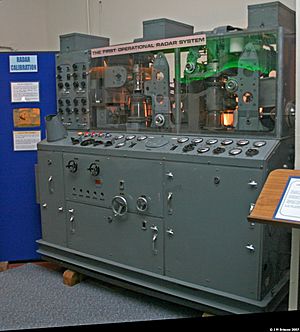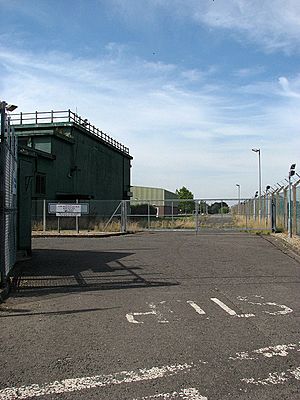RAF Air Defence Radar Museum facts for kids

The Royal Air Force Air Defence Radar Museum is a cool place to visit. It's a museum located at an old Royal Air Force base. This base was called RAF Neatishead. It is near the village of Horning in Norfolk, England.
This museum shows you the history of how the United Kingdom protected its skies. It especially focuses on how radar technology grew. This story goes from the 1930s all the way to the end of the Cold War.
Contents
What You Can See at the Museum
The museum has many interesting things to explore. It helps you understand how Britain kept itself safe from air attacks.
The Cold War Operations Room
One of the main attractions is a full-size Operations Room. This room was used during the Cold War. For many years, this is where people managed Britain's air defence. You can see how they tracked planes and made important decisions.
Radar and Communication Gear
You will also find many real pieces of old radar equipment. There are also communication devices. These were used to spot aircraft and talk to pilots. It shows how technology changed over time.
Royal Observer Corps Post
There is a special exhibit about the Royal Observer Corps. This group had "Nuclear Reporting Posts." These were places where people would watch for nuclear attacks. They would report what they saw. This part of the museum shows how they prepared for such events.
RAF Coltishall Gallery
The museum also has a section about RAF Coltishall. This was another important Royal Air Force base nearby. You can learn about its history and the planes that flew from there.
Who Runs the Museum?
Many amazing volunteers help run the museum. A lot of these volunteers used to work in the RAF themselves. They share their experiences and knowledge with visitors.
The museum is also a registered charity. This means it is a non-profit organization. Its charity number is 1058887.


